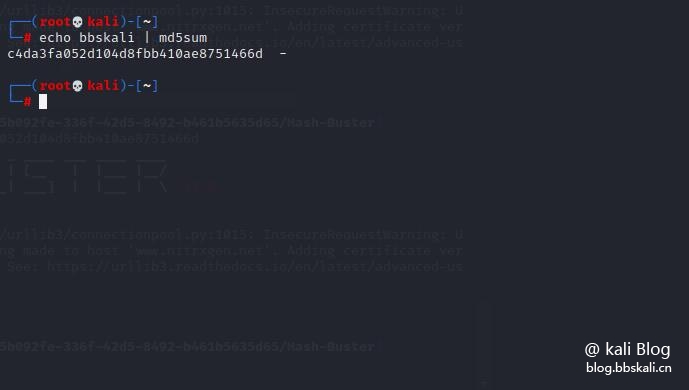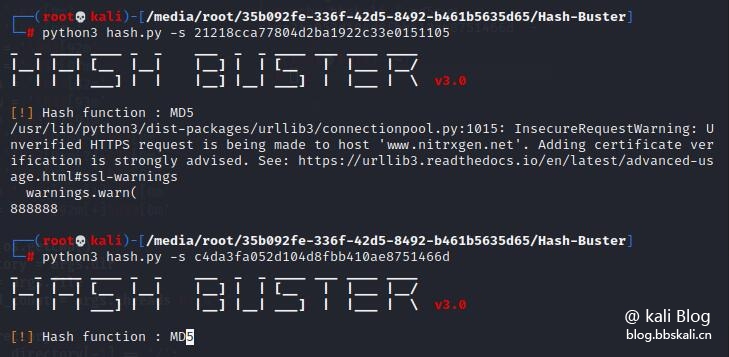What is MD5
A widely used cipher hash function that can produce a hash value of 128 bits (16 bytes) for encrypting data. It is used in every field of life. For example, the account and password registered by major websites are stored in the database through MD5 encryption. If I know the MD5 value, can I know the password I used? The answer is certain, let's take a look together.
Generate md5 values of a certain set of values in kali
Execute the command
echo bbskali | md5sum so that we generate the md5 value of bbskali.
The effect is as follows
As above we get the corresponding md5 value is c4da3fa052d104d8fbb410ae8751466d
Similarly, how to get the corresponding ciphertext through the md5 value?
There are many ways, we can complete it through some online md5 decryption websites, but this article will introduce a small script written by python to easily solve the appeal problem.
Installation and use
git clone https://github.com/s0md3v/Hash-Buster/
cd Hash-Buster
python3 hash.py -s md5 value Note: python2 is incompatible, please use python3 instead. Of course, you can also directly compile and install make install for details. You can see the author's introduction.
Advantages
Advantages: Automatic hash type recognition supports MD5, SHA1, SHA256, SHA384, SHA512 to extract and crack hash from files, and can recursively find hash values from directories. Multi-threaded
Other
Crack a single hash
python3 hash.py -s hash
Find hash from directory
Just specify a directory, and the Hash Buster will iterate through all files and directories present in it, looking for hash values.
python3 hash.py -d /root/Documents





Recommended Comments